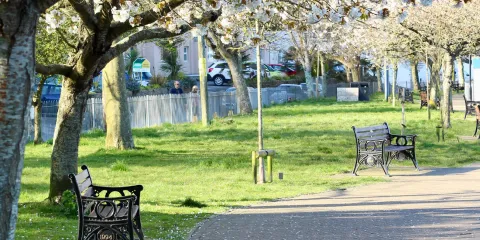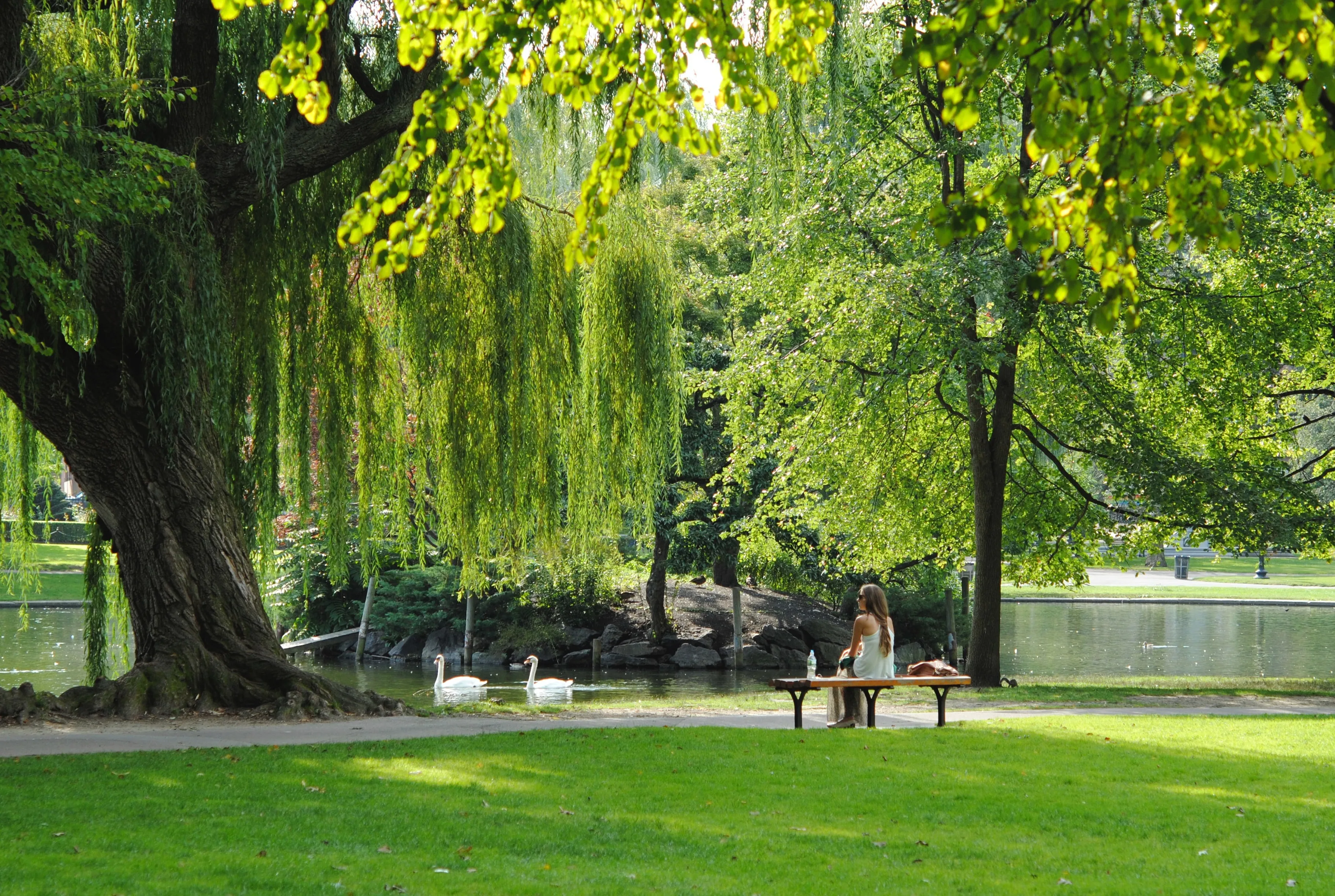The gathering place
Communities are shaping their public spaces into social places. Article by Chris Cannon.

The Ancient Greeks called it the agora – “the gathering place” – a large, public venue that served as an anchor for the local populace to interact, a predecessor to the more contemporary notion of the town square. A hub of economic, political, and social activity, the agora was the heartbeat of the city-state, where one might indulge in a concert, an exhibition, a vote, a protest, a grocery pickup, and a philosophical debate all over the course of an evening stroll. The anxiety disorder agoraphobia – which keeps sufferers locked in their homes with the curtains drawn – literally means “fear of the gathering place.”
While the prominence of central public spaces has waxed and waned over centuries and civilizations, the past few decades have seen an implosion of the very concept. The permanent, centralized agora has given way to temporary, dispersed gathering places, which have served as small-scale experiments for reimagining how urban public spaces could be used to better serve people and build pride in community.
In both formal and informal ways, cities, businesses, non-profits, and local residents are looking to make potential gathering spots more fun, stimulating, and inclusive. From plazas to pavements to alleyways, communities are embracing the connection between a society’s wellbeing and the design of its public spaces.

The permanent, centralized agora has given way to temporary, dispersed gathering places, which have served as small-scale experiments for reimagining how urban public spaces could be used to better serve people and build pride in community. Photo by Scott Webb
Left to mere appearance, a public space tends to function as scenery to be witnessed in passing, a manicured no man’s land with little to draw people to its grounds, much less talk to each other. But properly planned and maintained, they can be islands of respite and community-building, improving a city’s quality of life by improving the interaction between its residents.
“It's where people can come together through the day,” says Winki Tam (BA’17), a public spaces professional and manager of placekeeping for a business improvement association. “It's the in-between places, before you go to work or go home, the place where you sit down and have a chance to reflect or to meet up with your community, the freedom to come and go as you please.”
These islands are new places carved out of the background space, transforming something you pass by into something you dip into. The interstitial public “space” becomes a public “place” – a venue for locals to take the ol’ social contract out for a test drive, changing the nature of the place by changing how it is inhabited. It’s not the location that’s special, it’s the ways people create interaction within the place, shaping the social environment of the community. “As places make sense,” the anthropologist Steven Feld once wrote, “senses make place.”
“Placemaking” – transforming physical landscapes to create new social landscapes – has been the mission of the Vancouver Public Space Network (VPSN) for the past 15 years. Founded in 2006 by Vancouver City planner Andrew Pask and a dozen volunteers, the non-profit group now boasts more than 2,000 members who champion the creative use of public space to improve a neighbourhood’s livability. The group regularly plans and executes small-scale “interventions” in Vancouver’s forgotten spaces, from alleyway activations to mobile SkyTrain parties, to push the limits of what placemakers call “tactical urbanism” – essentially a guerilla-style approach to urban planning focused on testing inexpensive pop-up activations for potential scalability. The temporary installations are ways to seed thinking and pilot ideas that could lead to long-term improvements in the social arena.
Traditionally a years-long process under the thumb of architectural firms and city planners, the design of public spaces to enhance local living is becoming the domain of the locals themselves.
“Sometimes you take these small things, and then organically they can grow into larger and better things with more collaborators, with more interest,” says Pask, whose years with the VPSN have earned him a wealth of experience negotiating the complex live, work, play equation that drives the engagement process. “Just raising the awareness in the first place and showing the possibility of change, you get people thinking about how that's a really important thing.”
Small groups of locals around the world have begun organizing their placemaking activities around Silicon Valley’s “lean startup” mentality – fail fast and cheap so you can learn fast and cheap – that now serves as a guide for creating better public spaces through tactical urbanism. Traditionally a years-long process under the thumb of architectural firms and city planners, the design of public spaces to enhance local living is becoming the domain of the locals themselves, leading not only to community-driven initiatives, but offering a library of ideas for cities and developers to consider on a larger, more permanent scale.
“We try to make sure that the interventions themselves are well-documented,” adds Pask, an adjunct professor who teaches urban design at UBC. “By showing what you can do in an alleyway for one day or a couple of days, and making sure you show the process along the way, you’re creating an opportunity for other people to pick that thread up and say, ʻyeah, actually there's a real interest in these alleyways.’”
If there was already real interest in the nooks and crannies of the outdoor public landscape before the pandemic, our new awareness of safe places to gather has sent it into overdrive. Over the past two years we’ve watched our parks, beaches, benches, and playgrounds broken down into 6x6-foot parcels, marked with signs, tape, and hula hoops to clearly indicate where our connection to that space begins and where it ends. Now, as we raise the blinds and emerge from our collective agoraphobia back into the social sphere, we do so with a new awareness of exactly how we engage – and are engaged by – the places we go to hang out with our neighbours.
“You really want to make your space as flexible as possible so groups can come in and use the space in the way they want,” says Stewart Burgess (MArch’12), a Vancouver-based architect who participates in public space activations. “So it's less prescriptive and more giving them the opportunity to engage and be a part of that space in their own way.”

If there was already real interest in the nooks and crannies of the outdoor public landscape before the pandemic, our new awareness of safe places to gather has sent it into overdrive. Photo by Josephine Baran
This flexibility of the public space is a key element of a placemaker’s most important duty: inclusivity. By definition, the public space is for everyone, so a carved-out place requires equitable access for every member of the community. This goes beyond such considerations as sloped curbs for the disabled and foreign-language signs for non-English speakers. The real advancement in public space design are the growing ways – ranging from informal consultations to hands-on participation – that communities are creating the spaces for themselves.
“I'm very interested in neighbourhood-scale public spaces,” says Pask, “the role of making sure that neighbourhoods themselves are compact and walkable, that they have an array of public spaces that allow for a variety of different activities. Not just open fields of green grass, but different types of spaces that can meet different needs, that can help neighbours get together and build community, strength, connection, and resilience.”
While the boom of localized, grass-roots planning is pulling us further from the centralized agora, it is pushing us closer to each other. Just as we are drawn into a network of strangers in a planned public space, the space itself is part of a network of larger public spaces around the city, each reflecting the character of its location and residents. What is a neighbourhood but a community of neighbours, and what is a city but a community of neighbourhoods?
Public spaces are shared spaces, and the idea that shared spaces should be designed by the people that share them is hardly a radical one. But recent changes in how we use our technology – particularly the lean-startup movement and the advent of social media – have allowed us to come together virtually to plan how to come together physically.
“A real point of importance with the way public spaces are delivered and programmed in cities comes from community-led placemaking,” adds Pask. “I think it's really important that we think about ways to enable that broadly, that we invite community members in to help define, design, and program public spaces. That broader collaborative process – from the idea stage to the design stage to the programming stage – is what makes our public spaces truly public.”
Article from UBC Trek Magazine


